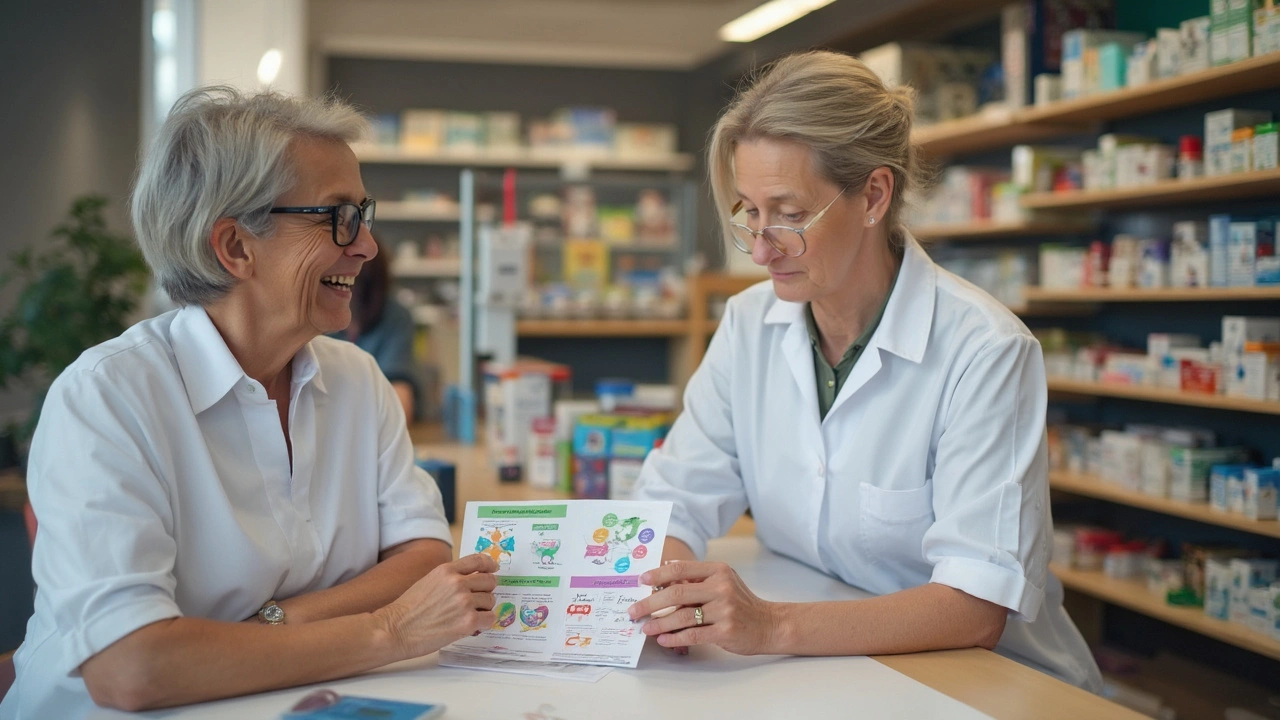Managing blood pressure: practical steps you can start today
High blood pressure doesn't have to feel out of control. Small, consistent changes make the biggest difference. Below are clear actions you can do right now—no jargon, no hype—plus smart ways to use medication and your pharmacist's help.
Daily habits that lower blood pressure
Cutting salt is one of the fastest wins. Aim to keep sodium near 1,500–2,300 mg per day by avoiding processed foods and checking labels. Add potassium-rich foods like bananas, potatoes, and spinach — they help balance sodium. Move your body: brisk walking or cycling 30 minutes most days lowers blood pressure and boosts mood. You don’t need a gym; a daily walking habit counts.
Lose a little weight if you can. Dropping 5–10% of body weight often shows measurable BP improvement. Sleep matters too—aim for consistent sleep times and 7–8 hours nightly. Limit alcohol (one drink a day for women, two for men) and quit smoking; both raise blood pressure and hurt your heart over time.
Track, treat, and talk
Buy a reliable home cuff and learn the right technique: sit quietly for 5 minutes, support your arm at heart level, take two readings one minute apart and record both. Check morning and evening for a week to see patterns. Share the log with your doctor or pharmacist; trends matter more than single numbers.
If you’re on pills, take them at the same time every day. Don’t stop or change doses without talking to your provider. Common meds include diuretics (like Lasix), beta-blockers (like bisoprolol), ACE inhibitors, ARBs, and calcium channel blockers. Each has benefits and side effects—diuretics can lower potassium, while beta-blockers may cause fatigue or slow pulse. If you feel dizzy, very tired, or notice changes in breathing or heartbeat, call your clinician.
Watch for drug interactions. For example, grapefruit can raise levels of some cholesterol drugs and other meds. Tell your pharmacist about all prescriptions, supplements, and herbal products so they can spot risks and suggest safer options.
Your pharmacist is a valuable partner. At Shiner Family Pharmacy we review meds, flag interactions, and help with practical issues like missed doses or side-effect management. Ask us for a quick medication check—sometimes a small timing change or a lab test prevents problems.
Know when to get help. If a reading is above 180/120 or you have chest pain, shortness of breath, sudden weakness, or severe headache, seek emergency care. For regular high readings, schedule a plan with your clinician—targets vary by age and health, so confirm your personal goal.
Managing blood pressure is a mix of habits, monitoring, and smart medication use. Start with one change this week—track it, ask questions, and build from there. Small steps add up fast.

